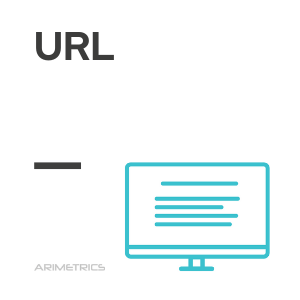
Definition:
A URL, an acronym for Uniform Resource Locator, is how a web address is commonly known, in reference to a web resource that specifies its location on a computer network and a mechanism for retrieving it.
It is a specific type of URI (Uniform Resource Identifier), although many people use both terms interchangeably.
Difference between URI and URL
A URL involves access to an indicated resource, which is not the case with all URIs. URLs are most often used to reference web pages(http),but they are also used for data transfer(ftp),email(mailto),database access(JDBC),and for many other applications.
Parts of the URL
Generally, the format of a URL is protocol://server:port/directory/page For example, https://www.arimetrics.com/blog/. This would be divided into the following parts:
- Protocol: Indicates the network schema that you use to retrieve the information. It consists of a sequence of characters that always begin with a letter. Despite being case-sensitive, lowercase letters are always used. This sequence is followed by a colon. The most popular examples for classifying URLs are http(used to transmit hypertext), ftp (file transfer), mailto (send emails), file, and data (includes data).
- Two bars (//): this is required only by some schemes. When there is no authority, they cannot appear.
- Server:This contains the name of the target machine, divided into the server name and domain (.es, .com, .org).
- Port: A number that corresponds to the specific point of entry to the machine, usually associated with the protocol.
- Directory: works like the directories of operating systems, serves to organize the pages on the server.
- Page: is the web page you were looking for.
